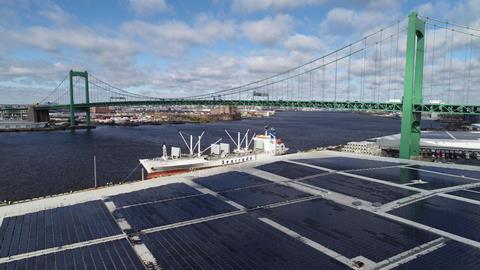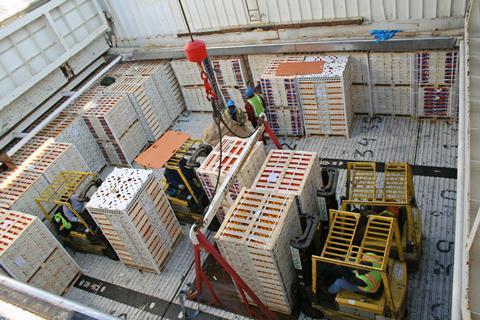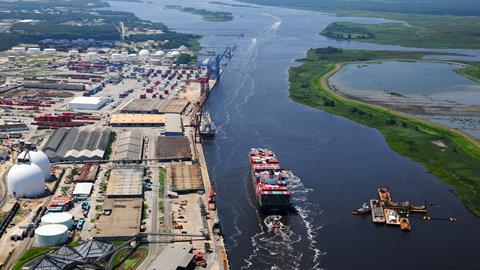As more and more Moroccan citrus and Chilean table grapes arrive in containers rather than reefer ships, there are major consequences for logistics and terminal operators along the Delaware River

For Moroccan and Chilean fruit exporters, there have been a number of significant changes in terms of reefer logistics on the US east coast this season. The question is, will those changes prove to be permanent?
Firstly, container lines MSC and CMA CGM have successfully fragmented the Moroccan citrus offer to US and Canadian customers by scheduling direct services from Agadir and Tangier to Montreal and Halifax, respectively.
Historically, the Canadian market has absorbed approximately half of Morocco’s citrus shipments to the US east coast, via the Delaware River ports of Wilmington and Gloucester. This generated a critical mass of cargo which meant Moroccan shippers could charter reefer ships.
While the switch to containers started well enough this season, disruption in the Red Sea and Suez Canal upset schedules. This caused vessel delays as well as omissions, and forced cargo back into the specialised mode in January.
Chilean change
Further down river, anecdotal reports suggest the Port of Wilmington is to reduce or even cease handling seasonal reefer cargo. The speculation was based principally on a dramatic drop in Chilean cargo throughput of at the port.
According to a report prepared by Chilean export association Frutas de Chile, this season Wilmington is on course to handle only 14,500 pallets, or 7 per cent of Chilean shipments – mainly grapes – sent on reefer vessels to the US east coast. This compared with 82,000 pallets last season and 132,000 pallets the season before.
The reduction is mostly the result of Chilean agency Trans Global Shipping’s move to containerise shipments with MSC instead of chartering vessels from Seatrade.
The main beneficiary of the modal switch is the Holt Logistics terminal at Gloucester, Massachusetts, which discharges a Cool Carriers service. It saw throughput rise from 122,000 pallets in 2021 to 127,000 pallets in 2023. This year, Frutas de Chile estimates Holt’s throughput will rise 50 per cent to 192,000 pallets.

‘Continued collaboration’
Responding to the speculation, Fruitnet received a communique from public relations firm Gaffney Bennett. It represents Enstructure, the company responsible for terminal operations at the Port of Wilmington.
It reads: “Since assuming operations at Port Wilmington in July 2023, Enstructure has been dedicated to supporting Moroccan and Chilean shippers, receivers, and carriers with their seasonal refrigerated cargo. We expect continued collaboration with the seasonal refrigerated cargo not only throughout this season but also in future seasons.”
From a shipping perspective, this Chilean season may be anomalous, given the widely reported issues with the Panama Canal. If so, Seatrade tonnage, and therefore Wilmington, will be back in the frame next year.
However, if MSC proves it can compete with the reefer mode as much on service as it does on price, there may be no coming back for the terminal – no matter how committed to seasonal cargo it may say it is.
Meanwhile, Chilean table grape shippers have converted the promise of a strong season into a reality. Terminal handlers report that operations are fluid, with pallet dwell time averaging less than two days.
How long this will last remains to be seen, however. Inbound logistics systems have yet to be stress-tested. And with heavier volumes now loading at source, it won’t be until late March that the chain comes under pressure.
Fumigation is the critical link and potential pinch point, particularly if vessels arrive late or towards the end of each week. That’s because all grapes have to be fumigated before they can enter the market.
Unless inland depots can be persuaded to receive fruit from the terminals over the weekends, containers may become stranded and fruit could spoil.
Timing may also be an issue for reefer vessels if they need a quick turnaround in order to meet southbound transit slots at the Panama Canal.
In terms of the ebb and flow of the international fruit trade, the ripples caused by these recent changes are likely to be seen for some time.
Main picture: The Port of Wilmington alongside the Delaware River (Photo: NC Ports)







